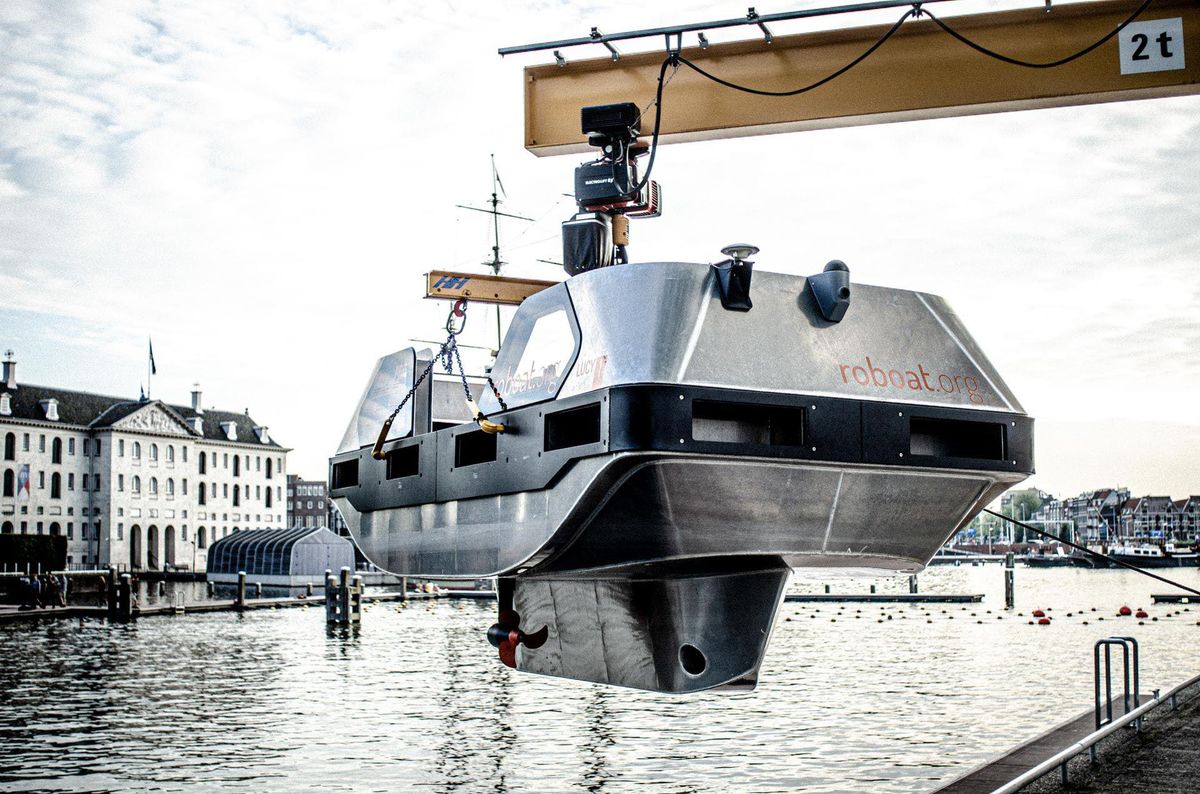It's become painfully obvious over the past few years just how difficult fully autonomous cars are. This isn't a dig at any of the companies developing autonomous cars (unless they're the sort of company who keeps on making ludicrous promises about full autonomy, of course)— it's just that the real world is a complex place for full autonomy, and despite the relatively well constrained nature of roads, there's still too much unpredictability for robots to operate comfortably outside of relatively narrow restrictions.
Where autonomous vehicles have had the most success is in environments with a lot of predictability and structure, which is why I really like the idea of autonomous urban boats designed for cities with canals. MIT has been working on these for years, and they're about to introduce them to the canals of Amsterdam as cargo shuttles and taxis.
MIT's Roboat design goes back to 2015, when it began with a series of small-scale experiments that involved autonomous docking of swarms of many shoebox-sized Roboats to create self-assembling aquatic structures like bridges and concert stages. Eventually, Roboats were scaled up, and by 2020 MIT had a version large enough to support a human.
But the goal was always to make a version of Roboat the size of what we think of when we think of boats—like, something that humans can sit comfortably in. That version of Roboat, measuring 4m by 2m, was ready to go by late last year, and it's pretty slick looking:
The Roboat (named Lucy) is battery powered and fully autonomous, navigating through Amsterdam's canals using lidar to localize on a pre-existing map along with cameras and ultrasonic sensors for obstacle detection and avoidance. Compared to roads, this canal environment is relatively low speed, and you're much less likely to have an encounter with a pedestrian. Other challenges are also mitigated, like having to worry about variability in lane markings. I would guess that there are plenty of unique challenges as well, including the fact that other traffic may not be obeying the same rigorous rules that cars are expected to, but overall it seems like a pretty good environment in which to operate a large autonomous system.
The public demo in Amsterdam kicks off tomorrow, and by the end of 2021, the hope is to have two boats in the water. The second boat will be a cargo boat, which will be used to test out things like waste removal while also providing an opportunity to test docking procedures between two Roboat platforms, eventually leading to the creation of useful floating structures.
- MIT is Building a Dynamic, Acrobatic Humanoid Robot - IEEE ... ›
- Forget Autonomous Cars—Autonomous Ships Are Almost Here ... ›
- MIT Unveils a Roboat Big Enough to Stand on - IEEE Spectrum ›
Evan Ackerman is a senior editor at IEEE Spectrum. Since 2007, he has written over 6,000 articles on robotics and technology. He has a degree in Martian geology and is excellent at playing bagpipes.



